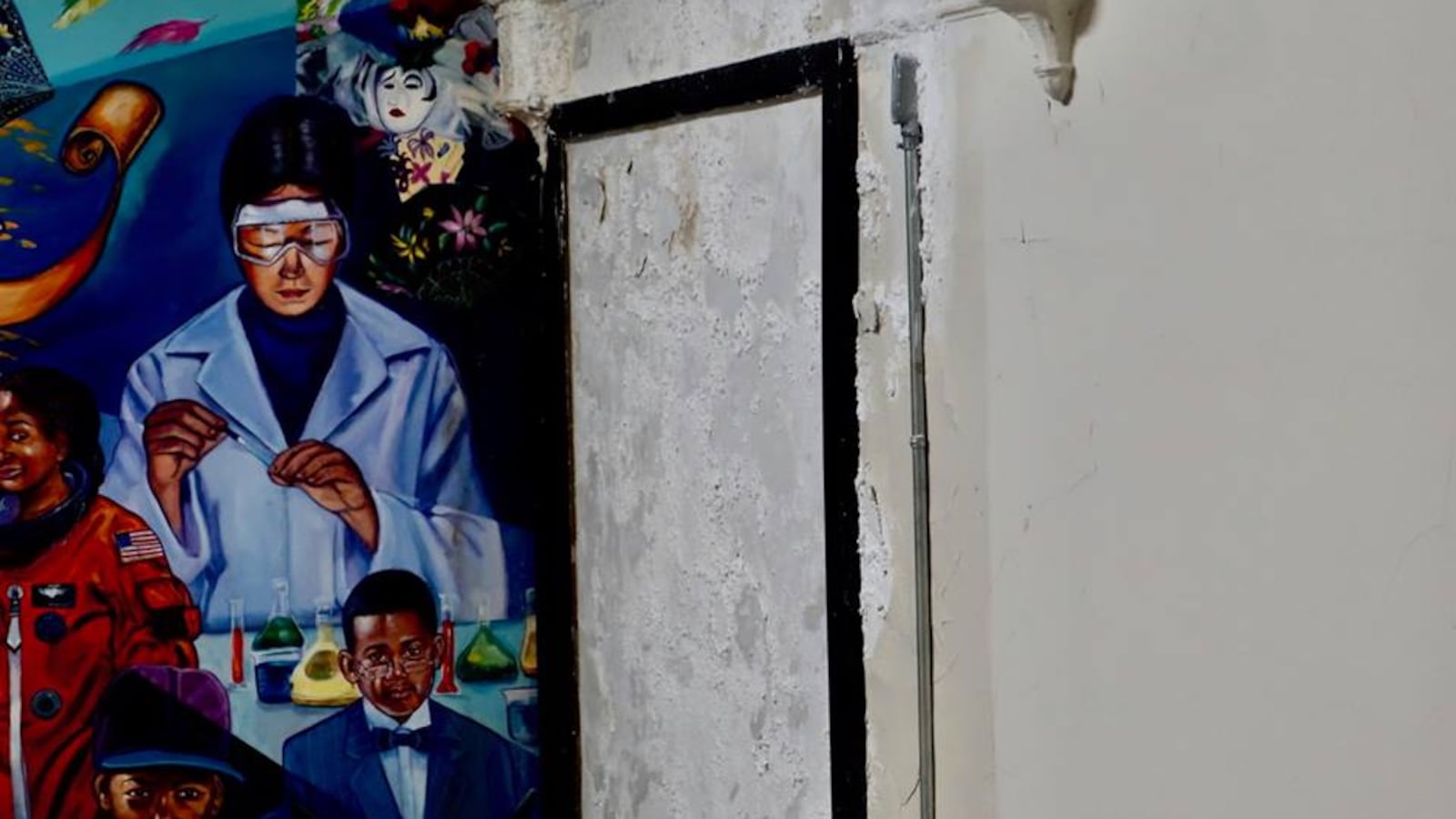This article was originally published in The Notebook. In August 2020, The Notebook became Chalkbeat Philadelphia.
Updated with a clarification from the District
As the School District releases bi-weekly updates on its summer efforts to clean up mold and asbestos in 40 school buildings, the environmental and workplace safety consultant for the teachers’ union continues to question its ability to complete the work in time for the opening of school and its method for prioritizing the projects.
In its last report, made on July 12, District officials said that work had been completed by that time on two elementary schools – Jackson and Nebinger, both K-8 schools – in the $15.6 million project. Of that amount, the District is paying $8 million and $7.6 million was contributed directly by the state.
Jerry Roseman, director of environmental science and occupational safety and health for the Philadelphia Federation of Teachers, said that the process worked for these two schools, but that it took a long time.
“That $7.6 million is earmarked to address lead paint stabilization efforts,” Roseman said. “So far, that effort has only been successfully completed in two schools. … It took somewhere around 12 weeks to complete that. There are 40-some other schools to complete that. It would take years to fix that. This will shortcut that by quite a lot.”
Roseman said he thought that the District would be able to complete, at most, eight more schools by the end of the summer.
“The hope is that eight additional schools will be completed by the end of this summer,” Roseman said. “I don’t know if that is realistic or not, but that is the hope.”
District spokesman Lee Whack said, “We will have all of our schools ready by the first day of school. We are going to be doing the work outlined at those 40 schools, and schools will be ready for the first day.
“We identified vendors to help complete the work, and that work is going to be continuing this summer. There are various factors with this type of work, but we’re focused on getting as much done as possible.”
Whack contacted the Notebook on Tuesday after this story was published to say that the work at the schools “likely will not be completed by the time school opens. Any areas that need to be closed off will be.”
The District has a plan, he said, and “a great facilities staff and team. Not only do we have a formula, we have a work order system, we have folks who are highly trained on environmental issues, and we have painters and other folks in construction. We have vendors that we work through, all of these things working together to improve our buildings.”
Roseman has often accused the District of sacrificing quality for haste. On this project, he said, one of the reasons it took so long to remediate Nebinger and Jackson is that it consulted with outside groups, which takes longer but is necessary to ensure that all the hazards are addressed.
“In discovering the problems initially with the lead stabilization, the District ran into real problems when they did the work initially without involving any stakeholders or outside input, which is what brought them to City Council for the hearings in January,” Roseman said. “Following that, they worked with me, on behalf of the PFT and the coalition, they worked with the principals, school staff, parents and put together a very detailed and very public-centered approach that got put in place at Jackson and Nebinger.”
Although the District is working to deal with lead paint using the $7.6 million from the state, Roseman says, they need to also focus on mold and asbestos issues in the schools.
“There are a number of schools with those kinds of conditions that are posing a hazard,” Roseman said, “… and there are four to five dozen schools in which there are asbestos and/or mold kinds of issues.”
Roseman stressed the need for cooperation between the District and outside groups to properly deal with mold and asbestos, but that cooperation has not been as forthcoming.
“There a large number of schools, many of which have work going on,” Roseman said. “We do not currently have in place the kinds of protocols, approaches, and collaborative efforts that we had in place for the lead stabilization. We’ve said, ‘let’s take the exact same kind of program, let’s use the model of success that we had and graft it onto these.’ There’s been some resistance to date to that.”
Roseman said that many schools that need work are not being addressed through this project. The District’s “screening approach,” he contended, “missed a bunch of schools [that] need to be included, because they present real dangers.”
Whack pointed out the enormity of the District’s overall problem, citing its own assessment that the city’s schools have $4.5 billion in deferred maintenance, and said that this $15.6 million effort is trying to put a dent in that.
“This is massive, we’re talking about $15.6 million, but we’ve already chronicled it at $4.5 billion,” Whack said. “Yes, there are other schools that we are working on.”


